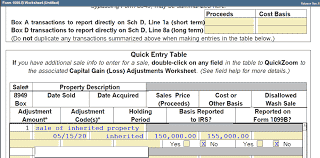For business owners who don’t have any employees, there is a unique 401(k) plan available called a self-employed 401k, or individual 401(k) (apart from a spouse). These accounts are good for sole proprietors and independent consultants who want a retirement plan similar to the one they might get at a larger company. An example of it is the Fidelity self-employed 401(k). This article provides a clear definition of self-employed 401K limits as well as a better understanding of self-employed 401K vs. sep IRA. It also answers the question of how to open a self-employed 401K without an employer.
Self Employed 401K
When it comes to pension plans, most employees are at the mercy of their employers. But, you have power if you work for yourself. You can decide which retirement funds are ideal for your objectives as well as how to use them. You can select from a number of accounts, including a solo 401 (k).
Self-employed 401k plans, also known as individual 401(k), solo 401(k), and one-participant 401(k) plans, are a type of retirement account for business owners without any additional employees. They can only be used by people who work for themselves and, if necessary, their spouses.
A self-employed person is both an employer and an employee for the purposes of a solo 401(k). As a result, they are able to fund the account on behalf of both parties.
Alternatives to Self-Employed 401k
For independent contractors and freelancers who want to save for retirement and receive the tax benefits associated with these IRS-approved options, there are essentially two additional possibilities in addition to the solo 401(k):
- A simplified Employee Pension, or SEP IRA, is intended to be a simple, adaptable choice for small firms with employees. It functions very similarly to a standard IRA but allows for bigger contributions. The maximum contributions are limited to 25% of your net adjusted income, but they are the same as for the Solo 401(k): $61,000 for 2022 and $66,000 for 2023. That could not be sufficient for your objectives. A catch-up contribution is not permitted for persons over 50. There isn’t a Roth option offered. Any brokerage or bank can open a SEP IRA for you.
- The Keogh Plan is available to sole proprietors, partnerships, and limited liability organizations, and it is frequently utilized as a profit-sharing mechanism for professional practices like doctor’s and attorney’s associations. It has the same contribution caps as the Simple 401(k) and SEP IRA, but comes with a heavier administrative cost. There isn’t a Roth choice.
Eligibility Requirements For Self-Employed 401k
To invest in a solo 401(k), you must meet a few criteria. From your own business, you must generate your own money. And you, or you and your spouse, must run the company.
These individuals often fall under the categories of sole proprietors, small business owners without staff (except a spouse), independent contractors, and freelancers. The company must also generate a profit. Your tax records can vouch for this.
You can start a self-employed 401k plan if you meet these requirements.
How to Set Up Your Self-Employed 401K Plan
You must have an employer identification number before you may create a Self-Employed 401k plan. Applying online with the IRS will earn you one of these.
- After obtaining an EIN, all that is left to do is pick a brokerage, complete the necessary paperwork, and fund your account. After that, you can start investing and accumulating retirement funds.
- Consult a financial adviser or tax preparer if you’re unsure of whether this self-employed retirement plan is the right option for you. They can assist you in choosing the ideal account for your objectives and organization.
Self-Employed 401K Limits
You must have net earnings from work done in your profession or business in order to contribute to a solo 401(k).
Net revenue must originate from the self-employed business owner’s own services (not investment income). You won’t be allowed to make contributions to the plan if the trade or business experiences a loss for the entire year.
Contributions to the solo 401k plan will be based on net earnings from each firm if you completely own (and control) multiple businesses and have net earnings from each.
Fidelity Self-Employed 401K
Fidelity self-employed 401K is an example of a self-employed 401K. Self-employed people, owner-only firms, and partnerships can save more for retirement via a 401(k) plan created just for you. There are no account fees or minimums required to open an account with Fidelity.
Their staff will provide you with excellent assistance.
Key Things to Know about Fidelity Self-Employed 401K
Here are keys things to know about fidelity self-employed 401K:
#1. Who Is Eligible
Owner-run enterprises and independent contractors without any workers. If they are a paid worker for the company, the owner’s spouse is eligible to take part in the plan.
#2. Tax Benefits
Pre-tax donations, tax-deductible contributions, and tax-deferred growth.
#3. Who Contributes
Funded through employer contributions and wage deferrals.
#4. Contribution Amounts
For 2022 ($27,500 if 50 or older) and 2023 ($22,500 if 50 or older), individuals may contribute up to those amounts. To a maximum annual contribution of $61,000 for 2022 and $66,000 for 2023, employers may contribute up to 25% of wages2. For 2022 and 2023, the total contributions cannot exceed $61,000 ($67,500 if 50 or older and paying the catch-up contribution level) and $66,000 ($73,500 if 50 or older and contributing the catch-up contribution amount). The catch-up limits for salary deferral are $6,500 for 2022 and $7,500 for 2023. (if age 50 or older). 3
#5. Withdrawals
Before a “trigger” event, such as reaching the age of 5912, becoming disabled, or passing away, participants cannot withdraw money from the plan. If you are taking a distribution and you are under the age of 5912, there is a 10% early withdrawal penalty. Around age 73, required minimum distributions begin.
#6. Investment Options
Equities, bonds, ETFs, mutual funds, and a variety of other securities.
#7. Fees
Fidelity self-employed 401k has no annual fee, closure charge, or opening costs (k). Online US stock, ETF, and options trades have a $0 commission.
Open Your Plan and Establish Account
You must also submit the adoption agreement and at least one completed self-employed 401(k) account application to Fidelity in order to completely establish your plan. Study more.
- You can establish a plan online if you:
- are creating a new strategy
- Do the plan’s administrator and participant concur?
- have US citizenship
- If you’re married, you’re designating your spouse as your primary beneficiary.
Contribute to Your Account
For Fidelity Investments, make checks payable. Also, in the check memo line, write your account number. A completed 401(k) Contribution Remittance Form should be included.
- (PDF) each time you make a contribution to your plan along with a check.
- Send the check and the remittance form by mail.
How to Open a 401K Without an Employer
You can face certain difficulties if you don’t currently hold a job. As 401(k) plans are employer-sponsored arrangements, only an employer (including independent contractors) may create one. If you don’t have a job or your own company (commercial or charity), you might want to think about making an IRA contribution instead. It’s not as straightforward as you may think, though, because those accounts might mandate that you contribute earned income from the previous year. Nonetheless, a spousal IRA might enable some couples to make contributions to a retirement account even though they are unemployed.
Self-Employed 401K vs Sep IRA
For a small business owner, even a self-employed freelancer, wishing to put up a professional-level plan, the solo 401(k) and SEP IRA are two of the best retirement plans available. Even while it can be difficult to prepare for retirement in a bad economy, small businesses can easily start these programs right away, taking advantage of the significant tax benefits they offer and planning for the future.
Understanding Self-Employed 401K vs Sep IRA
You can save roughly the same amount of money each year in a solo 401(k) and a SEP IRA, but there are some significant differences between the two plans, so it’s important to study the fine print to determine which one is best for you. The following are things to consider about the two:
#1. Contribution Rates
The solo 401(k) can aid you in saving money more quickly despite having similar annual contribution limitations. You are able to save up to 25% of your income with the SEP IRA. In contrast, a solo 401(k) allows you to contribute up to 100% as an employee up to the yearly limit before switching to employer contributions at a rate of up to 25%.
If you have a side job in addition to your main employment, and you can save money at a higher rate thanks to it, this 401(k) option is extremely helpful. But, keep in mind that your yearly maximum contribution limit applies to all of your 401(k) accounts’ combined contributions.
#2. Viability for More Employees
The solo 401(k) won’t function for a company with employees, with the exception of a spouse who is employed by your organization. In that situation, you might choose the SEP IRA, which enables you to set up a plan for numerous employees. You should contrast the SEP IRA and the SIMPLE IRA when creating a plan for your employees to see which is more effective.
#3. Roth 0ptions
The solo 401(k) is your only choice (apart from a Roth IRA) if you’re seeking the alluring tax-free growth of a Roth plan (k). In addition to pre-tax payments, the solo 401(k) also lets you make after-tax contributions. The SEP IRA, in contrast, limits you to the regulations of a regular IRA even though the annual maximum contribution is significantly more than that particular plan.
Pros and Cons of Self-Employed 401K
The advantages of solo 401(k)s are numerous.
- Maximum contribution: You can easily accumulate retirement savings because to their high contribution cap.
- Tax-deductible: You won’t have to pay taxes on the money until you remove it later because they are tax-deductible and funded with pre-tax earnings. If you anticipate being in a lower tax bracket after retirement, this may be advantageous.
There are several drawbacks, though:
- Maximum age: A 10% early withdrawal penalty may apply if you begin withdrawals before you are 59 1/2 years old.
- That does not apply to your staff: If you anticipate your firm might grow in the future, it might not be the greatest option to use a self-employed 401(k) because you cannot use it to cover staff.
Withdrawing Funds from a Self-Employed 401K
The purpose of the self-employed 401(k) is the same as that of a typical 401(k) plan: to help you save money for retirement. For instance:
- A 10% early withdrawal penalty and any applicable income taxes may apply to withdrawals made before the age of 59.
- If you’re self-employed, you’ll need to start withdrawing money from your 401(k) as early as age 72.
- Arrangements may be set up to permit loans or dividends for unforeseen circumstances
- Plans, including SEP IRAs and standard IRAs, can be set up to accept rollovers from other retirement accounts.
- If the employer’s plan permits rollovers, you can transfer the assets from your self-employed 401(k) into another 401(k) or an IRA.
- The self-employed 401(k) is a desirable alternative for small-business owners or sole proprietors who wish to be able to save aggressively for the future because of its high contribution levels, broad investment possibilities, and relatively simple administration.
- But if you think your company might eventually hire more people, you’ll need to either convert your self-employed 401(k) plan to a standard 401(k) or do away with it.
Can You Do a 401K if You Are Self-Employed?
Self-employed 401k, also known as solo 401(k)s or individual 401(k)s, is a unique savings option for small-business owners without any employees (apart from a spouse).
How Do I Qualify for a Self-Employed 401K?
There are no restrictions on age or wealth, but you must be a sole proprietor.
Which Is Better a Self-employed 401K Vs Sep?
The solo 401(k) and SEP IRA have comparable yearly contribution limits, but the 401(k) may be a superior choice for single freelancers. The solo 401(k) only works for firms with one owner, but it allows you to save money in the account considerably more quickly (or with a spouse).
How Many Years Do You Have to Work to Get Your 401K?
(If the plan specifies that after no more than 2 years of service, the member is 100% vested in all plan account balances, the standard 401(k) plan may require 2 years of service for eligibility to receive an employer contribution.
How Do I Start a 401K without an Employer?
You must sign up with a different financial institution if your employer doesn’t provide a 401(k) plan or if you work for yourself. You can open a 401(k), IRA, or any other type of retirement plan of your choice there. It’s also necessary to transfer your existing 401(k)s to these accounts in addition to these 401(k) alternatives.
What Is the Best Retirement Plan if You Are Self-Employed?
For those with comparatively limited self-employment income, a Traditional IRA or Roth IRA is preferable. SEP IRAs are ideal for self-employed people who wish to maximize their retirement contributions but don’t anticipate hiring any staff in the near future.
Final Thoughts
The self-employed 401k and SEP IRA have comparable yearly contribution limits, but the 401(k) may be a superior choice for single freelancers. The solo 401(k) only works for firms with one owner, but it allows you to save money in the account considerably more quickly (or with a spouse). Also, unlike the SEP IRA, the solo 401(k) offers a tempting Roth alternative.
Related Articles
- RETIREMENT PLANS FOR SELF-EMPLOYED: A Guide to Identifying the Best Retirement Plan for Self-Employed 2023
- WHAT IS A SEP IRA? Withdrawal Rules And Contribution Limits
- SEP IRA RULES: Sep IRA Rules 2023
- HOW TO CHECK 401K BALANCE: Simple Guide
- SELF-EMPLOYED RETIREMENT PLANS: Best 2023 Picks, Comparisons & Reviews
- 401k INVESTMENTS: Meaning, How to Invest, Companies & Best Investments






